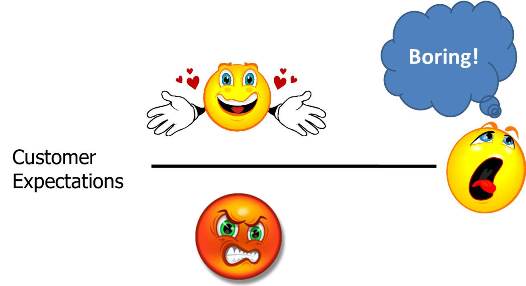Note: Lessons from The Overlook is a monthly update on lessons learned from owning a vacation rental property in the Southern California mountain town of Idyllwild. It's a hands-on opportunity to apply some of the techniques I advise my clients to use. You can find past updates here.
It's been awhile since I've shared an update about The Overlook.
A lot has happened since we put the cabin up for sale at the end of May. The summer is typically our slow season, yet we had our busiest July and August ever. Then there was a small fire that closed us down for all of September.
The one thing that did not happen was a sale. We still own the cabin and now we think we have an even better plan (more on that in a moment).
The biggest lesson from the summer is you have to be flexible.
Beware of solution jumping
Solution jumping occurs when you instinctively identify a solution without fully understanding the problem. The danger is you could miss better opportunities or fail to solve the problem at all because your solution did not address the root cause.
We initially jumped to a solution when we decided to sell The Overlook.
The problem we thought we were trying to solve was the cabin was too big:
It has four bedrooms, which is too much for us personally.
Damage increases and utility costs go up when we have more than six guests (our maximum is eight).
Larger cabins typically rent less often than smaller cabins.
Our plan was to sell The Overlook at a profit, buy a smaller cabin, and pocket the difference. We ran the numbers and found that a smaller cabin with a lower nightly rate would likely bring in more revenue per month.
It looked like a good plan on paper, but several factors made it hard to execute:
The market softened shortly after we put the cabin up for sale.
A high number of rentals made it hard for our agent to show the cabin to buyers.
We didn't find any smaller cabins that we really liked.
And then there was the fire over Labor Day weekend.
A guest was using the grill and had it positioned against the side of the house. Some grease caught fire inside the grill and ignited the wood siding. The fire spread into the eaves before it was extinguished.
Photo credit: Idyllwild Vacation Cabins
It could have been a lot worse, but there was enough damage that we had to take The Overlook off the rental market for the month of September.
This is where flexibility comes in.
We could have made a bad decision if we locked in on selling the place. We might have slashed the asking price to sell The Overlook quickly and then found ourselves losing a lot of money trying to upgrade the next cabin to our standards.
How flexibility can create new opportunities
You can often discover unexpected solutions if you maintain your flexibility and resist the urge to jump to a solution. It is important to understand the problem first.
We initially thought our problem was The Overlook was too big. We now realize our maximum capacity of eight guests was the issue.
There are just six seats at the dining table.
The living area is comfortable for four to six, but not eight.
Damage and utility costs go up when we have eight guests.
Advertising The Overlook as a four bedroom cabin for eight guests also limited our market.
Almost all of our renters are groups: large families, groups of friends, or several couples traveling together. These groups travel almost exclusively on weekends. Smaller cabins get more rentals during the week because a smaller party requires fewer people to make plans together.
The Overlook still had a number of advantages that other cabins we saw for sale did not have. The biggest one we could not replace was the view:
This thinking opened up another possibility. What if we reduced the capacity at The Overlook from eight to six?
Our property manager has another cabin that has two bedrooms and a large game room downstairs. It rents extremely well. We know we can do something similar at The Overlook.
So that’s our plan.
We'll reduce our capacity to six by turning the large master bedroom into a game room and entertainment space. This should allow us to create an even better guest experience while reducing damage and utility costs.
The changes should also increase our revenue as we expect to pick up more rentals during the week and throughout the summer.
The changes will take several months to implement.
We're heading into our busy season, and there are already a number of rentals on the book for guests who expect four bedrooms. The good news is we have a clear path forward towards a better solution than we originally imagined.
Take Action
You can use flexible thinking to make similar strides in your own business.
The next time you face a challenging problem, resist the urge to jump to a solution. Take time to truly understand the problem you are trying to solve. Come up with alternative approaches, even if they don't seem feasible at first.
And above all else, stick to your vision.
Our vision at The Overlook is welcome to your mountain retreat. We think these changes will bring us even closer to fulfilling that vision for our guests.








